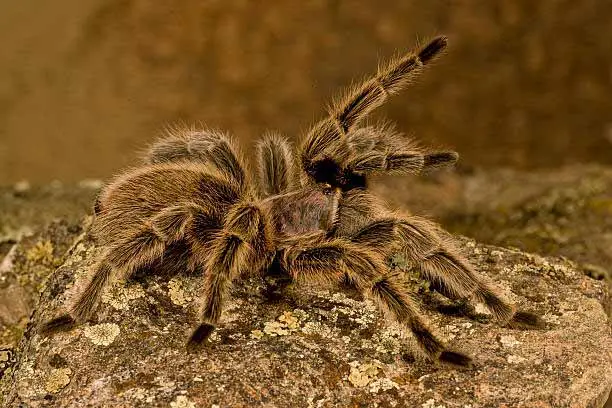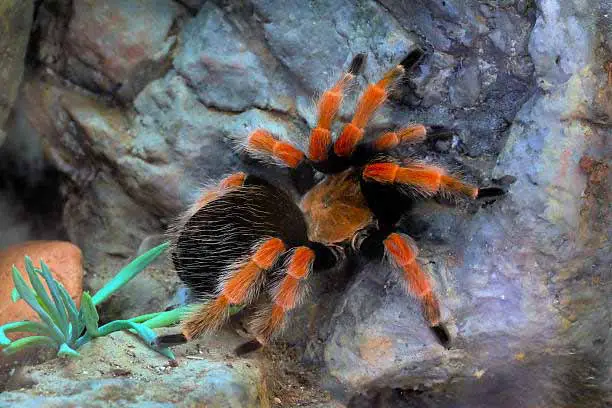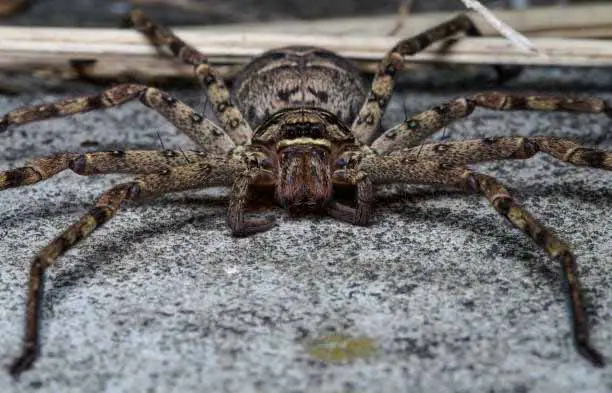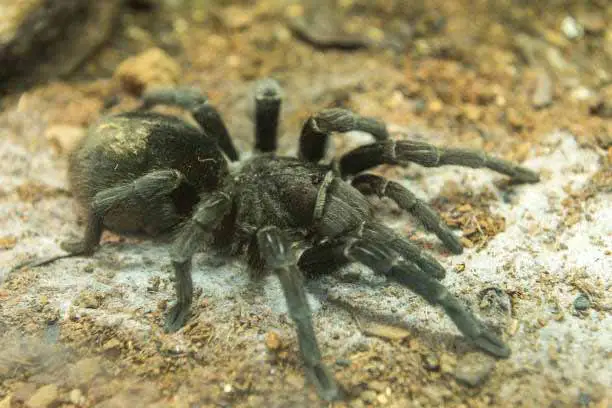Unveiling the Enchantment of Eight-Legged Companions
In the realm of unconventional pets, a fascination with arachnids is weaving its way into the hearts of adventurous pet owners. Beyond the conventional furry or feathered companions, spiders emerge as intriguing and surprisingly captivating creatures to share our living spaces with. While the idea of spiders as pets might send shivers down some spines, this unique choice offers a window into the mysterious world of these arachnids.
This article explores the top 10 spiders that have carved a niche as desirable and manageable pets. From the docile Chilean Rose Tarantula to the acrobatic Jumping Spider, each species brings its own charm and challenges to the table. Delve into the intricacies of spider keeping, where eight legs become a source of wonder rather than fear, and the silk they spin is the thread binding the keeper to the captivating world of arachnids.
Whether you’re a seasoned arachnid enthusiast or a curious beginner, join us as we unravel the beauty and mystique behind the top 10 spiders that have found their way into the hearts and homes of those seeking a different kind of pet experience. Welcome to the enthralling world of keeping spiders as pets, where every silk strand tells a tale of fascination and every delicate leg leaves an indelible mark on the tapestry of unconventional companionship.
1. Chilean Rose Tarantula (Grammostola rosea): A Rosy Elegance in Eight Legs
The Chilean Rose Tarantula, scientifically known as Grammostola rosea, stands out as one of the most popular and beginner-friendly spiders in the world of arachnid enthusiasts. Hailing from the arid regions of Chile, this species has captured the hearts of pet owners for its docile nature, low-maintenance requirements, and unique rosy appearance.

Key Characteristics:
- Docility: Known for their calm and gentle demeanor, Chilean Rose Tarantulas are ideal for beginners seeking an introduction to spider keeping.
- Appearance: The species gets its name from the pinkish or rose-colored hairs that cover its body, adding a touch of elegance to its overall appearance.
- Hardiness: Resilient and adaptable, these tarantulas can thrive in a variety of environments, making them suitable for different levels of spider keeping expertise.
Habitat and Enclosure:
- Substrate: Provide a substrate of peat moss or coconut fiber for burrowing.
- Hideouts: Include shelters like half logs or flower pots for them to retreat to.
- Temperature and Humidity: Maintain temperatures between 70-75°F (21-24°C) with a humidity level of 65-75%.
Feeding:
- Offer a diet of appropriate-sized live insects, such as crickets or mealworms.
- Adjust feeding frequency based on the tarantula’s age, feeding less often for adults.
Interaction and Handling:
- While generally docile, limit handling to minimize stress for the tarantula.
- Use a soft brush or your hands with extreme care when necessary, avoiding sudden movements.
Breeding:
- Breeding Chilean Rose Tarantulas requires careful consideration of environmental conditions and the introduction of a receptive mate.
The Chilean Rose Tarantula, with its enchanting rosy hues and gentle disposition, serves as an excellent ambassador for those entering the captivating world of spider keeping. As keepers delve into the care and nuances of this fascinating species, the Chilean Rose Tarantula stands as a testament to the awe-inspiring diversity found within the realm of arachnids.
2.Mexican Redknee Tarantula (Brachypelma smithi): A Scarlet Jewel of Arachnid Majesty

The Mexican Redknee Tarantula, scientifically identified as Brachypelma smithi, emerges as a striking and iconic species within the realm of tarantula enthusiasts. Native to the arid regions of Mexico, this tarantula species is celebrated for its vibrant red and black coloration, calm demeanor, and captivating presence.
Key Characteristics:
- Coloration: Renowned for its dramatic contrast of black and bright red colors, the Mexican Redknee Tarantula boasts a visually arresting appearance that captivates observers.
- Temperament: Despite its intimidating appearance, this species is known for its generally calm and docile nature, making it suitable for both novice and experienced keepers.
- Lifespan: With proper care, Mexican Redknee Tarantulas can enjoy a lengthy lifespan, often reaching 20 years or more in captivity.
Habitat and Enclosure:
- Substrate: Provide a substrate of a mix of coconut fiber and peat moss to facilitate burrowing.
- Shelter: Furnish the enclosure with hideouts, such as cork bark or artificial caves, to provide a secure retreat.
- Temperature and Humidity: Maintain temperatures around 75-85°F (24-29°C) and moderate humidity levels.
Feeding:
- Diet: Offer a varied diet of appropriately sized live insects, such as crickets, roaches, and mealworms.
- Feeding Schedule: Adjust the feeding schedule based on age, feeding more frequently for younger tarantulas.
Interaction and Handling:
- Caution is Key: While generally docile, handling should be approached with caution to avoid stress for the tarantula.
- Limited Handling: Limit handling to reduce stress and minimize the risk of injury to both the tarantula and the keeper.
Breeding:
- Breeding Mexican Redknee Tarantulas involves careful consideration of environmental factors and introducing a receptive mate under controlled conditions.
The Mexican Redknee Tarantula, with its vivid colors and composed demeanor, stands as a testament to the allure of arachnid companionship. As enthusiasts embark on the journey of caring for this majestic species, the Mexican Redknee Tarantula invites keepers into a world of fascination, highlighting the extraordinary beauty that can be found within the often misunderstood realm of tarantulas.
3.Jumping Spider (Phidippus regius): Masters of Micro-leaps and Inquisitive Charm
The Jumping Spider, scientifically identified as Phidippus regius, defies the stereotypical image of spiders with its small size, vivid colors, and remarkable agility. Native to North America, these spiders have become favorites among arachnid enthusiasts for their endearing personalities and captivating antics.

Key Characteristics:
- Size: Petite in size compared to other spiders, Jumping Spiders are known for their compact bodies and large, forward-facing eyes.
- Colors: Adorned with vibrant hues of black, white, and iridescent shades, Phidippus regius displays a dazzling palette that adds to its visual appeal.
- Vision: Possessing exceptional vision, these spiders use their keen eyesight for hunting and navigating their surroundings.
Behavior and Interaction:
- Curiosity: Jumping Spiders are renowned for their inquisitive nature, often turning their heads to observe their surroundings.
- Jumping Ability: Displaying remarkable jumping prowess, these spiders can cover several times their body length in a single leap.
- Intelligence: Studies suggest that Jumping Spiders exhibit a level of intelligence, using problem-solving skills in various situations.
Habitat and Enclosure:
- Space: Provide a well-ventilated enclosure with ample vertical space for climbing.
- Substrate: A substrate of peat moss or coconut fiber helps maintain humidity and provides a suitable environment for burrowing.
- Enrichment: Include items like small branches and silk plants to create a stimulating environment.
Feeding:
- Diet: Offer a diverse diet of small live insects, such as fruit flies, crickets, and pinhead-sized prey.
- Feeding Frequency: Feed every few days, adjusting based on the spider’s age and activity level.
Handling:
- Gentle Approach: While Jumping Spiders are generally more tolerant of handling than other spiders, a gentle approach is crucial to prevent injury.
- Short Duration: Keep handling sessions brief to minimize stress for the spider.
Breeding:
- Breeding Jumping Spiders can be a delicate process, requiring careful observation of mating behaviors and controlled conditions.
The Jumping Spider, with its miniature size and engaging behaviors, provides a unique and delightful addition to the world of spider keeping. As keepers marvel at their acrobatic feats and charming personalities, the Jumping Spider stands as a testament to the diversity of arachnid companions, proving that even the smallest creatures can leave a lasting impact on those who venture into their world.
4.Giant Huntsman Spider (Heteropoda venatoria): Majestic Arachnid Royalty of the Tropics
The Giant Huntsman Spider, scientifically identified as Heteropoda venatoria, commands attention with its impressive size, swift movements, and distinctive appearance. Native to tropical regions, this spider species has garnered both fascination and trepidation due to its formidable stature and predatory prowess.

Key Characteristics:
- Size and Leg Span: True to its name, the Giant Huntsman Spider boasts an imposing size, with a leg span that can reach up to a foot or more in some cases.
- Coloration: Exhibiting earthy tones of brown and beige, these spiders often blend seamlessly with their surroundings, aiding in their hunting strategies.
- Speed: Known for their incredible speed and agility, Giant Huntsman Spiders are adept hunters, relying on both stealth and swift strikes to capture prey.
Habitat and Distribution:
- Natural Habitat: Found in tropical and subtropical regions, Giant Huntsman Spiders prefer warm, humid environments.
- Shelter: Provide ample hiding spots, such as bark or leaf litter, to mimic their natural habitat.
Feeding:
- Diet: Giant Huntsman Spiders are proficient hunters, feeding on a variety of insects, including cockroaches, moths, and other arachnids.
- Feeding Frequency: Offer prey items every few days to satisfy their voracious appetite.
Handling and Interaction:
- Caution Advised: Due to their size and speed, handling Giant Huntsman Spiders is not recommended, as it may cause stress for both the spider and the handler.
- Observation: Appreciate their beauty and behavior from a safe distance, allowing them to thrive in their enclosure.
Enclosure:
- Size:* Ensure the enclosure is spacious enough to accommodate their large leg span.
- Substrate:* Provide a substrate of coconut fiber or peat moss for burrowing and moisture retention.
- Climbing Opportunities:* Include branches or other vertical elements for climbing, as these spiders are known to explore different elevations.
Breeding:
- Breeding Giant Huntsman Spiders in captivity requires careful consideration of environmental conditions and the introduction of a compatible mate.
The Giant Huntsman Spider, with its grandiose size and predatory prowess, stands as a testament to the awe-inspiring diversity within the arachnid kingdom. While respecting their natural behaviors and maintaining a hands-off approach is advisable, observing these majestic creatures in their carefully crafted enclosures offers enthusiasts a glimpse into the intricate world of these tropical arachnids.
5.Brazilian Black Tarantula (Grammostola pulchra): Elegance in Ebony Eight Legs
The Brazilian Black Tarantula, scientifically known as Grammostola pulchra, enchants arachnid enthusiasts with its sleek, ebony appearance and calm demeanor. Originating from the forests of Brazil, this tarantula species stands out for its striking beauty and ease of care, making it a sought-after choice among spider keepers.

Key Characteristics:
- Coloration: As its name suggests, the Brazilian Black Tarantula is distinguished by its deep black color, lending an air of sophistication to its overall appearance.
- Temperament: Known for its docile and calm nature, making it an ideal choice for both novice and experienced tarantula keepers.
- Lifespan: With proper care, these tarantulas can enjoy a long lifespan, often exceeding two decades in captivity.
Habitat and Enclosure:
- Substrate: Provide a substrate of coconut fiber or peat moss to allow for burrowing.
- Hideouts: Include hiding spots such as cork bark or half logs for security.
- Temperature and Humidity: Maintain temperatures around 75-80°F (24-27°C) and moderate humidity levels.
Feeding:
- Diet: Offer a diet of appropriately sized live insects, such as crickets, roaches, and mealworms.
- Feeding Schedule: Adjust feeding frequency based on the tarantula’s age, providing a well-balanced diet.
Interaction and Handling:
- Gentle Nature: Brazilian Black Tarantulas are generally docile, but handling should be approached with care to avoid stress.
- Limited Handling: Keep handling sessions brief and infrequent to minimize disturbance.
Breeding:
- Breeding Brazilian Black Tarantulas involves careful introduction of a male during a receptive period, usually accompanied by specific environmental conditions.
The Brazilian Black Tarantula, with its lustrous ebony exterior and serene disposition, offers spider enthusiasts a captivating glimpse into the world of arachnid companionship. As keepers immerse themselves in the care and appreciation of this elegant species, the Brazilian Black Tarantula serves as a testament to the understated beauty found within the diverse tapestry of tarantulas.
Care Tips for Pet Spiders: Ensuring a Happy and Healthy Arachnid Companion
Keeping spiders as pets can be a unique and rewarding experience, but it comes with the responsibility of providing proper care to ensure their well-being. Here are essential care tips for a variety of pet spider species:
- Research Species-specific Requirements:
- Different spider species have unique care needs. Research the specific requirements of the spider species you choose, including habitat, temperature, humidity, and diet.
- Select an Appropriate Enclosure:
- Choose an enclosure that suits the spider’s size and behavior. Ensure it provides adequate ventilation and security.
- Provide the Right Substrate:
- Use an appropriate substrate for burrowing or web-building spiders. Common substrates include coconut fiber, peat moss, or a mixture of both.
- Temperature and Humidity Control:
- Maintain temperature and humidity levels according to the spider’s natural habitat. Most spiders thrive in temperatures ranging from 70-85°F (21-29°C).
- Create Hiding Places:
- Include hiding spots like half logs, cork bark, or artificial plants to give the spider a sense of security.
- Feeding:
- Offer a varied diet of live insects suitable for the spider’s size. Common prey items include crickets, roaches, mealworms, and flies.
- Adjust the frequency of feeding based on the spider’s age and species.
- Handle with Caution:
- Exercise caution when handling spiders. While some species tolerate handling, others may be more sensitive or defensive.
- Minimize handling to reduce stress for the spider.
- Avoid Overcrowding:
- Keep spiders individually housed to prevent aggression or stress from overcrowding.
- Regular Observation:
- Regularly observe your spider to monitor its behavior, feeding habits, and overall health. Any sudden changes may indicate a potential issue.
- Veterinary Care:
- Find a vet experienced in arachnid care in case of emergencies or health concerns.
- Research Mating Behaviors:
- If you have a male and female of a species, research their mating behaviors. Some spiders require specific conditions for successful breeding.
- Legal Considerations:
- Be aware of local regulations regarding keeping certain spider species as pets. Some spiders may be protected or restricted in certain areas.
- Educate Yourself:
- Stay informed about your spider’s natural behavior, lifespan, and any potential health issues. This knowledge will help you provide the best care.
Remember that responsible and informed ownership is crucial for the well-being of your pet spider. By creating a suitable environment and attending to their specific needs, you can enjoy the fascinating world of arachnid companionship while ensuring a happy and healthy life for your eight-legged friend.
Watch this for more Informations :
Embracing the Extraordinary World of Spider Companionship
In the realm of unconventional pets, the journey into the world of spiders as companions reveals a tapestry woven with fascination, elegance, and resilience. From the gentle grace of the Chilean Rose Tarantula to the vibrant exuberance of the Jumping Spider, each species encapsulates a unique chapter in the extraordinary story of arachnid companionship.
As we traverse this enthralling landscape, it becomes evident that keeping spiders as pets is not merely a choice; it is an invitation to embrace the extraordinary. The Brazilian Black Tarantula, with its ebony allure, and the Curly Hair Tarantula, boasting fuzzy charm, exemplify the diverse facets of arachnid beauty. These creatures, often misunderstood and underappreciated, flourish under the care of dedicated enthusiasts who recognize the intricate dance between the delicate and the formidable in the spider kingdom.
The Giant Huntsman Spider, a majestic giant of the tropics, commands attention with its impressive size, serving as a reminder that beauty and awe can be found in even the most imposing arachnid forms. Meanwhile, the diminutive yet captivating Jumping Spider showcases that the tiniest among them possess an intelligence and curiosity that captivates the human observer.
As we conclude this exploration, it is clear that keeping spiders as pets is an art—a delicate balance between understanding their specific needs and marveling at the wonder they bring to our lives. In embracing the extraordinary, we find ourselves drawn into a world where eight legs become a source of fascination, each silk strand spun a testament to the intricacy of arachnid existence.
In the care of dedicated keepers, these spiders cease to be mere pets; they become ambassadors of a world that challenges preconceptions and invites us to appreciate the extraordinary in the seemingly ordinary. The journey into the realm of spider companionship, with its myriad colors, behaviors, and surprises, is an odyssey that enriches our understanding of the vast and diverse tapestry of life on Earth. May we continue to embrace the extraordinary and, in doing so, discover the profound joys of sharing our lives with these remarkable arachnid companions.











